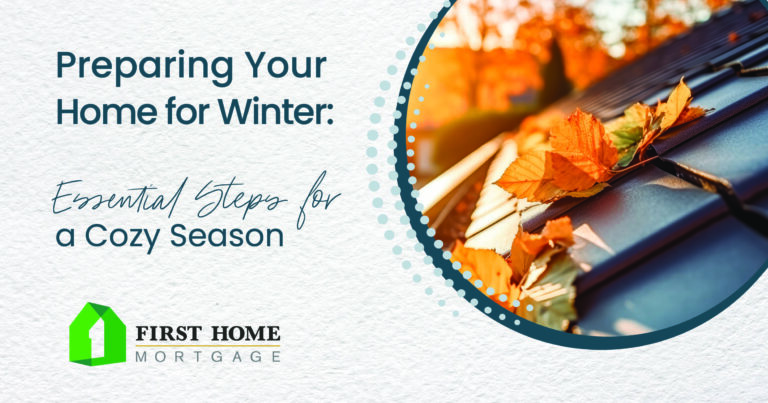Winter Weather Timeline: Preparing Your Home And Family

Table of Contents
Don't get caught off guard by the next winter storm! A well-planned Winter Weather Timeline is your key to staying safe and comfortable throughout the cold season. This guide will help you prepare your home and family for winter's worst, ensuring you're ready for anything from a light dusting of snow to a major blizzard. Knowing what to do and when will minimize stress and maximize your safety during winter weather emergencies.
<h2>Early Fall: Preventative Measures & Prepping Your Home (September - October)</h2>
Before the first snowflake falls, focus on preventative home maintenance and building your emergency kit. This proactive approach to winter weather preparedness will save you time, money, and potential heartache later in the season.
<h3>Assessing Your Home's Winter Readiness:</h3>
A thorough inspection of your home's exterior and interior is crucial for winter weather preparedness. This preemptive step ensures your home can withstand the harsh conditions.
- Roof and Siding: Inspect your roof for leaks, damaged shingles, or missing tiles. Repair any damage to prevent water infiltration, which can lead to significant problems during winter. Similarly, check your siding for cracks or gaps that could let in cold air.
- Windows and Doors: Seal any gaps or cracks around windows and doors using caulk or weather stripping to prevent drafts and heat loss. This simple step can dramatically improve your home's energy efficiency.
- Gutters and Downspouts: Clean gutters and downspouts thoroughly to remove leaves and debris. Clogged gutters can lead to ice dams, which can cause significant roof damage.
- Heating Systems: Schedule a professional inspection and maintenance for your furnace, fireplace, and any space heaters. Ensure they are in safe working order to avoid heating system failures during cold snaps. Consider changing air filters as well.
- Plumbing: Insulate exposed pipes, especially those located in unheated areas like basements, attics, and crawl spaces. Frozen pipes can burst, causing significant water damage.
<h3>Building Your Emergency Kit:</h3>
Creating a comprehensive emergency kit is essential for winter weather preparedness. This kit should contain everything your family needs to survive for several days without power or access to essential services.
- Food and Water: Stockpile at least a three-day supply of non-perishable food items, such as canned goods, dried fruits, and energy bars. Ensure you have one gallon of water per person per day.
- First Aid and Medications: Assemble a well-stocked first-aid kit and ensure you have enough prescription medications to last for several days.
- Lighting and Warmth: Gather flashlights, extra batteries, blankets, warm clothes, and hand warmers.
- Communication and Power: Consider a portable generator (following all safety guidelines!), a battery-powered weather radio, and a fully charged power bank for your cell phone.
- Important Documents: Keep vital documents such as insurance information, medical records, and identification in a waterproof, easily accessible container.
<h2>Late Fall: Fine-Tuning & Outdoor Preparations (November)</h2>
As winter approaches, shift your focus to exterior preparations and finalizing your emergency plan.
<h3>Winterizing Your Yard and Exterior:</h3>
Protecting your property from the elements is crucial for minimizing damage and ensuring safety.
- Plants and Trees: Protect vulnerable plants and trees by wrapping them or using other winter protection methods.
- Outdoor Furniture: Store or cover outdoor furniture to protect it from snow, ice, and harsh winds.
- Gutters and Downspouts (recheck): One last check to ensure gutters and downspouts are clear of debris, ready for winter’s precipitation.
- Snow Removal Tools: Inspect and prepare your snow shovel, snowblower, or other snow removal equipment. Ensure they are in good working order and easily accessible.
<h3>Checking Emergency Systems & Communication:</h3>
Verify your emergency systems are functional and your communication plan is up-to-date.
- Smoke and Carbon Monoxide Detectors: Test all smoke and carbon monoxide detectors to ensure they are functioning correctly.
- Emergency Communication: Ensure your family knows how to contact each other and emergency services in case of power outages or other disruptions. Review your chosen method of communication (weather radio, cell phone, etc.)
- Family Emergency Plan: Review and update your family's winter weather emergency plan, including evacuation routes and meeting points.
<h2>Winter's Arrival: Staying Safe During Storms (December - February)</h2>
Once winter arrives, staying informed and responding appropriately is key to staying safe.
<h3>Monitoring Weather Forecasts:</h3>
Stay informed about impending winter weather.
- Weather Alerts: Pay close attention to winter storm warnings, watches, and advisories issued by your local weather service.
- Weather Apps: Download a reliable weather app and set up location-based alerts to receive timely updates.
- Road Conditions: Stay informed about road closures and travel advisories before venturing out.
<h3>Responding to Winter Storms:</h3>
Knowing how to respond appropriately to a winter storm can save lives and minimize property damage.
- Stay Indoors: Stay indoors during the worst of the storm, unless absolutely necessary to travel.
- Dress Warmly: Dress in layers to stay warm, focusing on protecting extremities like fingers and toes.
- Conserve Energy: Conserve energy by turning down the thermostat a few degrees when leaving the house or going to bed.
- Check on Neighbors: Check on elderly neighbors or those who may need assistance during severe weather.
<h2>Conclusion</h2>
Creating a comprehensive Winter Weather Timeline is crucial for safeguarding your home and family during the cold winter months. By proactively addressing preventative measures, preparing an emergency kit, and staying informed about weather conditions, you can significantly reduce the risks and discomforts associated with winter storms. Don't wait until the first snowflake falls – start planning your winter weather preparedness strategy today! Implement your winter weather timeline now and enjoy a safer, warmer winter.

Featured Posts
-
 The Truth About Makeup Does It Damage Your Skin
Apr 25, 2025
The Truth About Makeup Does It Damage Your Skin
Apr 25, 2025 -
 Late Goal Denies Bayern Munich Victory Against Union Berlin
Apr 25, 2025
Late Goal Denies Bayern Munich Victory Against Union Berlin
Apr 25, 2025 -
 Details Emerge On Jelly Roll And Guy Fieris Unlikely Collaboration
Apr 25, 2025
Details Emerge On Jelly Roll And Guy Fieris Unlikely Collaboration
Apr 25, 2025 -
 Walton Goggins Bold Fashion Statement The Fluoro Speedo Look
Apr 25, 2025
Walton Goggins Bold Fashion Statement The Fluoro Speedo Look
Apr 25, 2025 -
 La Fires Fuel Landlord Price Gouging A Selling Sunset Star Speaks Out
Apr 25, 2025
La Fires Fuel Landlord Price Gouging A Selling Sunset Star Speaks Out
Apr 25, 2025
Latest Posts
-
 Nothings Modular Phone A Reinvention Of Mobile Technology
Apr 30, 2025
Nothings Modular Phone A Reinvention Of Mobile Technology
Apr 30, 2025 -
 Three Years Of Data Breaches Cost T Mobile 16 Million In Fines
Apr 30, 2025
Three Years Of Data Breaches Cost T Mobile 16 Million In Fines
Apr 30, 2025 -
 16 Million Fine For T Mobile Details Of Three Years Of Data Security Lapses
Apr 30, 2025
16 Million Fine For T Mobile Details Of Three Years Of Data Security Lapses
Apr 30, 2025 -
 2024 Open Ai Developer Event New Tools For Voice Assistant Creation
Apr 30, 2025
2024 Open Ai Developer Event New Tools For Voice Assistant Creation
Apr 30, 2025 -
 Building Voice Assistants Made Easy Open Ais 2024 Developer Showcase
Apr 30, 2025
Building Voice Assistants Made Easy Open Ais 2024 Developer Showcase
Apr 30, 2025
